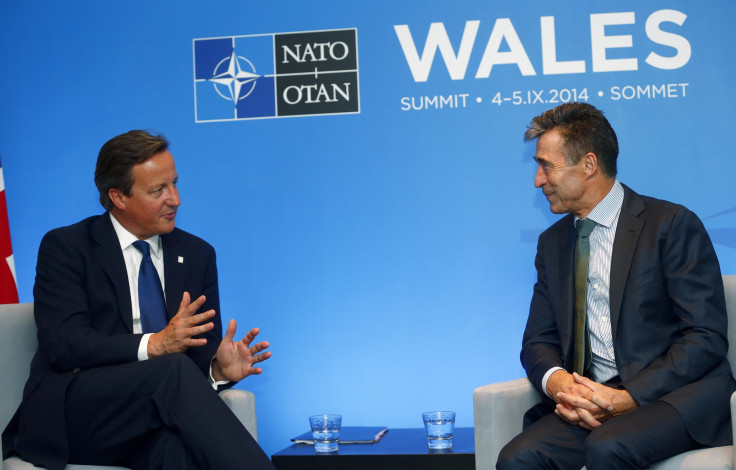Ukraine Russia Crisis: What Can NATO Do To Stop Ongoing Turf War

NATO will meet for two days at its 26th summit in Wales this week, and much of those 48 hours will be spent discussing the crisis in Ukraine and what NATO’s plan is moving forward. The alliance has been talking tough over Russia's alleged incursion into eastern Ukraine, but the summit offers a chance to weigh options. The question is what actions will it take, if any?
NATO has struggled with the reality that it's essentially powerless in Ukraine. Ukraine is not a NATO member state, so NATO has no mandate for intervening against Russian forces operating there. What NATO can do is supply Ukraine and build up its presence in the four NATO member states nearest Russia: Poland, Lithuania, Latvia and Estonia, the last two of which have significant ethnic Russian populations that could give President Vladimir Putin a pretext for intervention.
“You have to get 28 countries to agree,” Reginald Dale, director of the Transatlantic Media Network at the Centers for Strategic & International Studies, told International Business Times. “One of the signals they need to send out is that they are capable of decisive and quick action. … It is somewhat distressing that Putin, who is the leader of a country in economic and strategic decline, can push around NATO, which is supposed to be one of the most successful political and military organizations in history.”
Britain has listed the Ukraine crisis as its number one priority for the NATO summit. It wants member states to agree on the following points: A new military exercise schedule, building necessary infrastructure, pre-positioning of equipment and supplies and an enhanced NATO Response Force.
The U.S. shares those goals. President Barack Obama visited Estonia Wednesday and lauded NATO’s increased presence there amid the escalation of violence in Ukraine. Obama said he believes “our alliance should extend these defensive measures for as long as necessary.”
NATO Secretary-General Anders Fogh Rasmussen is expected during the summit to introduce a proposal to create a “spearhead” force of at least 4,000 troops and equipment to be fully deployed within a few hours notice. All of that is going to cost a lot of money, which not all NATO members want to fund. Canada and Germany have already nixed a proposal for a commitment for all NATO allies to spend 2 percent of their GDP on defense. The U.S., Estonia, U.K. and Greece are the only NATO countries that spend more than 2 percent of GDP on military expenses.
Along with an agreement on funding and an expanded response force, supplying Ukraine would send an important message to Moscow that it can’t intervene in a country at will, Dale said.
“Russia may think that because Ukraine is not a NATO member it can operate and undermine the government there, but from the NATO point of view, you have to stop the rot,” Dale said. “If not, who’s to say he wouldn’t mess with NATO countries in the same way he’s done in Ukraine?”
© Copyright IBTimes 2024. All rights reserved.






















